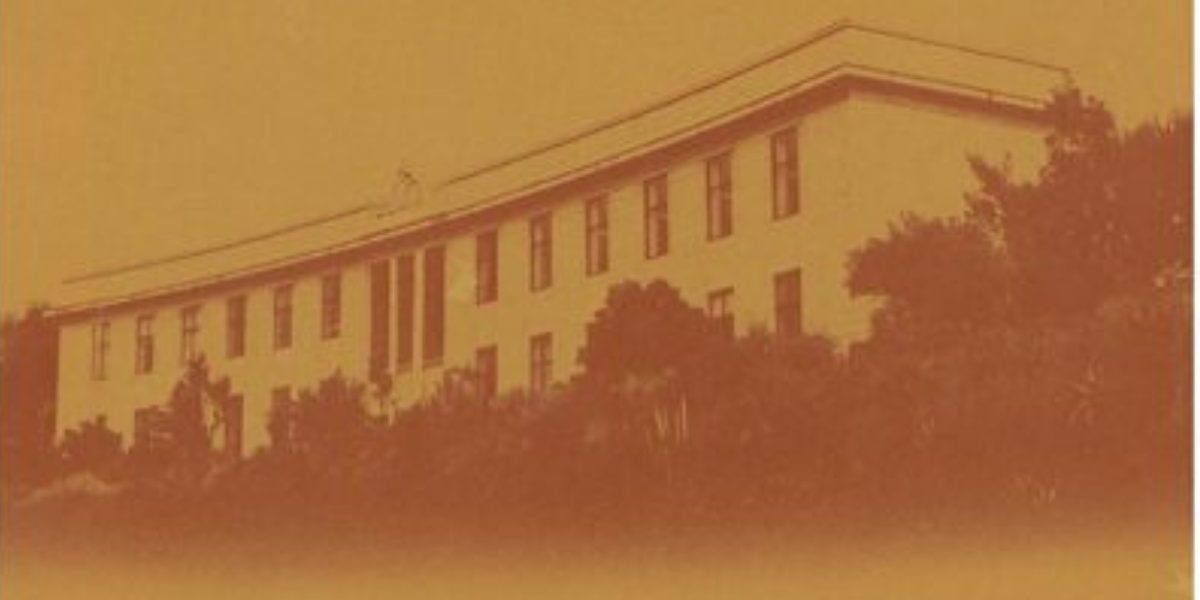In 1934 SAIIA was established as a formal institution in Cape Town, with the objective of furthering the studies of international affairs, with regard to politics, economics and jurisprudence. The first chairman, then carrying the title President, was Sir James Carruthers Beattie, with Professor R.W. Wilcocks and Senator F.S Malan elected as Vice-Presidents.
During the period before World War II, the Institute had no permanent office and much of its activities were devoted to developing external contacts. SAIIA was often the only institution representing the former colonies in Africa at global conferences like the Commonwealth Relations Conferences. In 1945, the Institute published its first paper, ‘The Real India: A human problem of world importance’, written by Sir Robert Bristow.
In a post World War II world, South Africa began to cement its international position. In the first published report, dated 1950-1952, the Chairman, Dr W. J. Busschau, expressed particular optimism that South Africans were beginning to realise the importance of observing international affairs. It was with fervour that SAIIA entered the next half-century, developing a wide number of activities dedicated to understanding international affairs through dialogue and research.
During the period between 1944 and 1954, SAIIA began the move from the Western Cape to the Highveld. It was on a visit to Princeton University’s Woodrow Wilson School of Public and International Affairs, that Dr Busschau was inspired to create a similar memorial to South Africa’s premier statesman, Jan Christiaan Smuts. Built as a living memorial to Smuts, the western wall of Jan Smuts House bears the inscription, ‘Monumentum aere perennius memoriae Johannis Smuts dedicatum’.
As Jan Smuts House would be located at the University of the Witwatersrand, the Deed of Trust issued by the Smuts Memorial Trust made provision for the establishment of the Department of International Relations. Professor Ben Cockram was appointed as the first Jan Smuts Chair of International Relations and had his office in Jan Smuts House. It was only in 1983 that the department, with over 500 registered students, moved to separate offices on Wits campus proper.
Permanent offices at Jan Smuts House allowed SAIIA to develop a clear conference programme. Conferences in the Oppenheimer Hall would draw more public attention to the Institute and its activities. In 1969 the Institute held its first symposium on the subject, ‘United States foreign policy in a regional context’ while the first major conference on ‘The impact on international relations of the population explosion’ was held in June 1970.
With John Barratt (formerly a Foreign Service Officer at the United Nations) as the institutions then Director General, SAIIA began to strengthen its public reputation by organising a number of conferences and symposia. International intellectual exchange was also prominent as SAIIA maintained links with over eighty similar organisations, academic departments and libraries. SAIIA’s independence of political partisanship remained integral as research, both at headquarters and branch level, continued to produce an objective understanding of often controversial questions.
The 1970s saw SAIIA’s research priorities move closer to critical issues of the South African political environment. Throughout the decade, conferences and accompanying occasional papers addressed topics such as ‘Education and training for development’, ‘The future of South West Africa’ and ‘South Africa in the world: The realities’. SAIIA’s commitment to non-racism and its willingness to engage with post-colonial African states is evident as conference participants included scholars from across Africa.
In South Africa, the Institute’s footprint was also spread across the country. At this time, SAIIA had active volunteer branches in Cape Town (1934), Durban (1939), Witwatersrand (1939), Eastern Cape (1945), Pretoria (1968), Stellenbosch (1971), Grahamstown (1975), the Transkei (1976), South West Africa/Namibia (1977), Pietermaritzburg (1978) and East London (1983).
In 1984 SAIIA celebrated its Golden Jubilee with three conferences focused on international cooperation. The first, ‘South Africa and its neighbours’ was held at the Hilton Hotel in Natal. Another conference was held in Sandton on the topic of economic interdependence and world order. The main conference was held in Cape Town (where SAIIA was founded) and focused on regional cooperation.
SAIIA underwent its own transition as South Africa moved through its political transition in 1994. Dr Sara Pienaar took over as National Director and in the previous year, the South African Journal of International Affairs was first published. Much of the research generated from 1992 to 1994 focused on understanding South Africa’s new position in the world while conferences stimulated dialogue on the future of South Africa’s foreign policy.
As South Africa acquired new confidence in its relations with the rest of the world, SAIIA too began to broaden its research agenda to include increased analysis of south-south cooperation. Under the inspired leadership of Dr Greg Mills as National Director during the period 1996-2005, the Institute achieved a new respect in terms of its international profile and became the preferred partner for many leading international think tanks. It consolidated its corporate membership base and developed closer relationships with diplomatic missions in South Africa, several of which would become major donors to the Institute.
2009 marks SAIIA’s 75th Anniversary. Today the institute boasts a dynamic staff and a world-wide body of research associates. Our programmes and research interests reveal an institute that continues to be globally aware but with an important South African and African perspective on the international stage.


